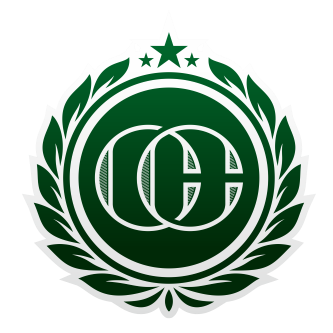The 4 main types of U.S. coins
And When They Were First Produced

There are 4 main types of U.S. Coins, and there are two that are not as commonly used. The first 4 are coins that are minted for General Circulation, this means that these coins are minted specifically for the public to use in everyday transactions. The four main types of U.S. Coins are as follows; the Cent (or Penny), the Nickel, the Dime, and the Quarter.
The 4 Main Types of U.S. Coins
- One Cent (Or Penny)
- Nickel
- Dime
- Quarter
The two coins that I mentioned in the above paragraph that aren't included in the 4 main coins, are coins that were at one point minted for general circulation, but have been removed due to unpopularity, and just not being used as often as the other coins. These two coins are the Half Dollar, and the Dollar Coin.
Read on to find out more about the history of the 4 main types of US Coins!
1. The U.S. Cent or Penny
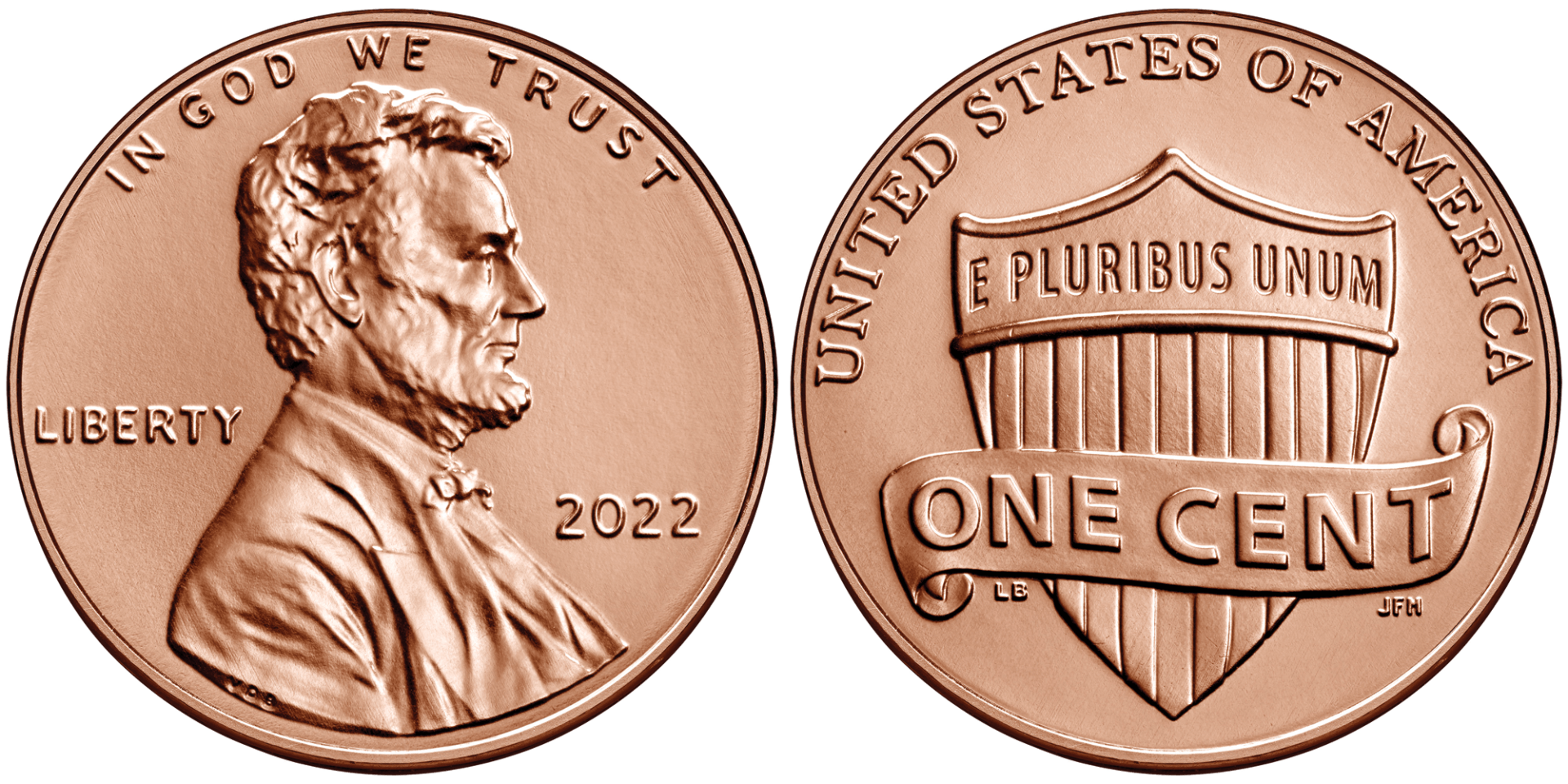
The US Cent, or Penny as it’s most commonly called, was first produced in the year 1793. The Penny at this time was actually much larger than it is today, almost the size of a half dollar! The first design of the Cent was the Flowing Hair design, and was used on all of the coinage released at this time. (It was common for all denominations to share the same design for many years).
The name “Penny” actually comes from the British coin of the same name, and is commonly used to refer to the US Cent. The very first one cent coin—though not as official as the ones released in 1793—is known as the Fugio Cent, released in 1787, and was designed by Benjamin Franklin!
The current One Cent design features a side profile view of President Abraham Lincoln on the obverse, with the Motto “In God We Trust” above his head along the edge of the coin, and the word “Liberty” to the left, with the date on the right.
The reverse of the one cent shows a shield, with the motto “E Pluribus Unum” and 13 stripes, representing the original 13 colonies. There is a banner over the shield with the words “One Cent” indicating the denomination of the coin. “United States of America” is along the top edge of the coin.
2. The U.S. Nickel

The US Nickel was first produced in the year 1792, and was called a half disme (pronounced”deem” and was the word for a dime at the time). The term “Nickel” didn’t actually come about until the year 1866. In 1866, President Andrew Johnson approved a bill that would authorize the coinage of five-cent pieces. These five-cent pieces would be composed of nickel and copper, which is where the nickel got its name, even though the coins were made of more copper than nickel. This first nickel was the Shield nickel.
The current Nickel design features Thomas Jefferson, facing towards the viewer, the motto “In God We Trust” is along the right edge of the coin, and the word “Liberty” as well as the date and mint mark are above his shoulder on the right.
The Reverse of the Nickel shows Monticello, which was Thomas Jefferson’s home. We see the motto “E Pluribus Unum” at the top edge of the coin, with the words “Monticello”, “Five Cents”, and “United States Of America” underneath the image of Monticello.
3. The U.S. Dime
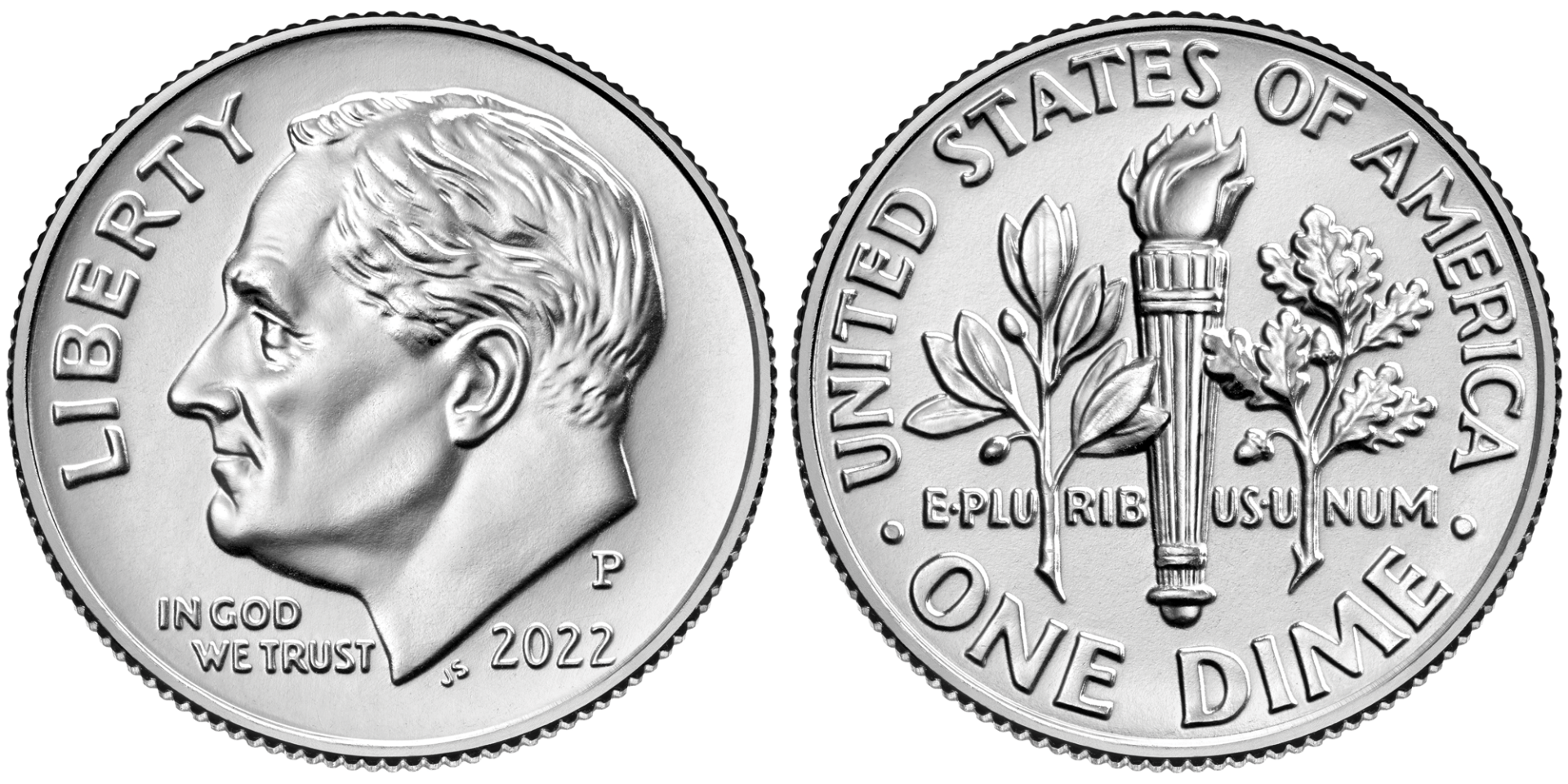
The US Dime was first produced in the year 1792, but were called “dismes” and never actually made it into circulation. The first “Dimes” to be released into circulation were produced in the year 1796.
First authorized by the Coinage Act of 1792, the dime didn't quite make its circulated debut until 1796. In 1796, the Draped Bust dime --designed by first Chief Engraver, Robert Scot-- was released into circulation. The very first dime authorized in 1792, the "disme" was one-tenth the silver weight and value of a dollar. This coin never made it into circulation due to production problems and very low demand for the coin.
The current design for the Dime features President Franklin D. Roosevelt’s profile on the obverse, the word “Liberty” is along the left edge of the coin, and the motto “In God We Trust” is towards the bottom of the coin. The date and mintmark can be seen below the truncation of Roosevelt’s neck.
The reverse of the Dime shows the torch (representing liberty), oak branch (representing strength), and olive branch (representing peace). The denomination “One Dime” is at the bottom, “United States Of America” is along the top, and the motto “E Pluribus Unum” can be seen towards the middle of the coin, interlaced with the design.
4. The U.S. Quarter
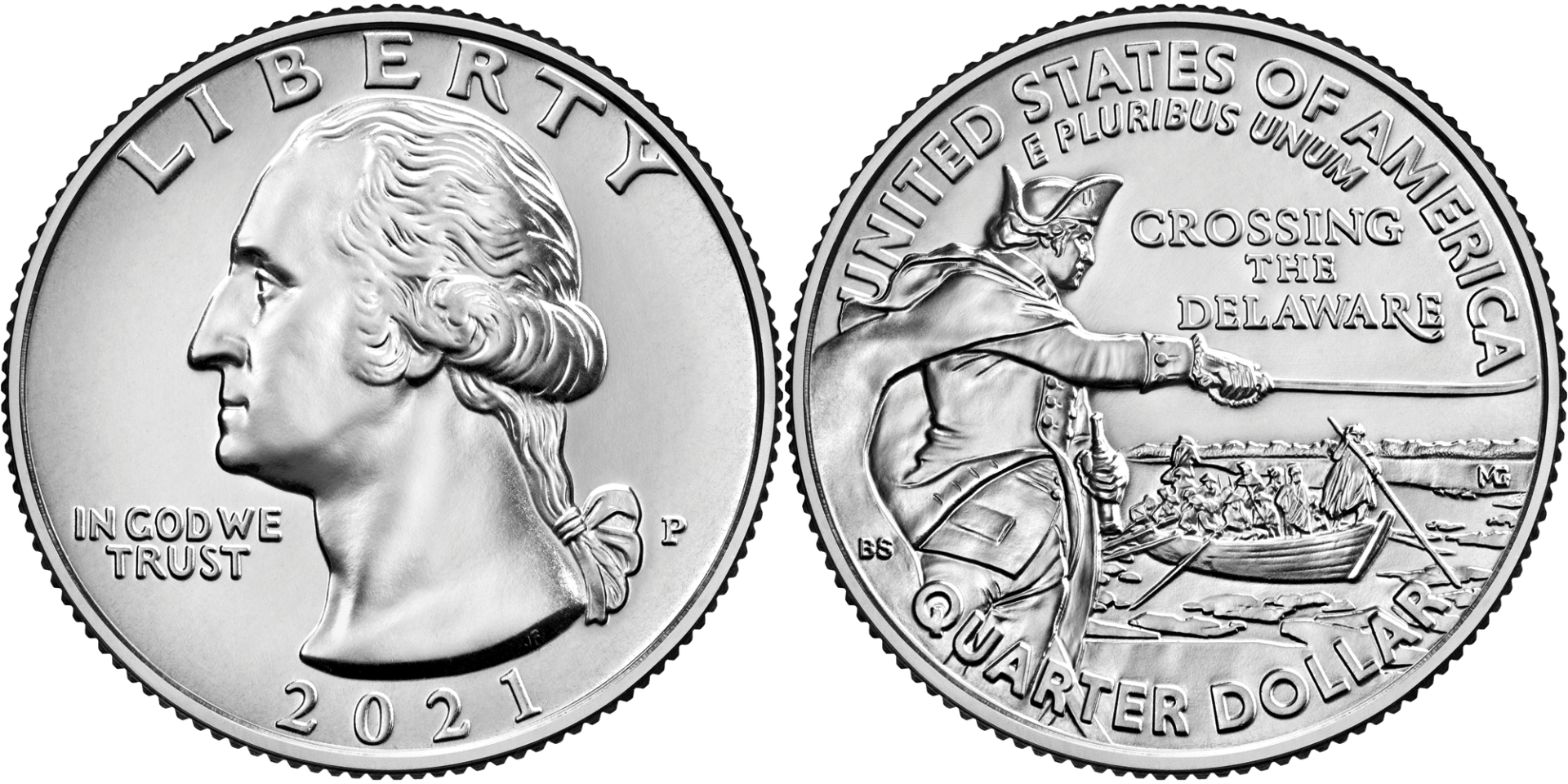
The US Quarter was first produced in the year 1796 with a design known as the “Draped Bust”. Although the quarter dollar was authorized by the Mint Act of 1792, the first quarters were not actually produced until four years later in 1796. This was due to the way the Mint operated at the time. The Mint would wait until citizens deposited gold or silver, and then the Mint would change that into coins of varying denominations and return it to the depositor, while keeping a portion of the deposit to pay for their services.
The current (2021) design for the Quarter shows President George Washington’s profile on the obverse, the motto “In God We Trust” is to the left, with the word “Liberty” along the top edge, and the date along the bottom.
The reverse of the Quarter shows George Washington crossing the Delaware, pointing forward with his sword in hand. “United States of America'' is along the top edge, with the motto “E Pluribus Unum” beneath it, and the denomination of “Quarter Dollar” is along the bottom edge of the coin.
Coins that are no longer in circulation
The last two coins in our article are coins that at one point were circulating, but since they weren’t used as often and there wasn’t a high demand for them, the US Mint stopped producing them for general circulation. They are still Minted, but now they are Minted for collectors, though they are still Legal Tender.
The U.S. Half Dollar
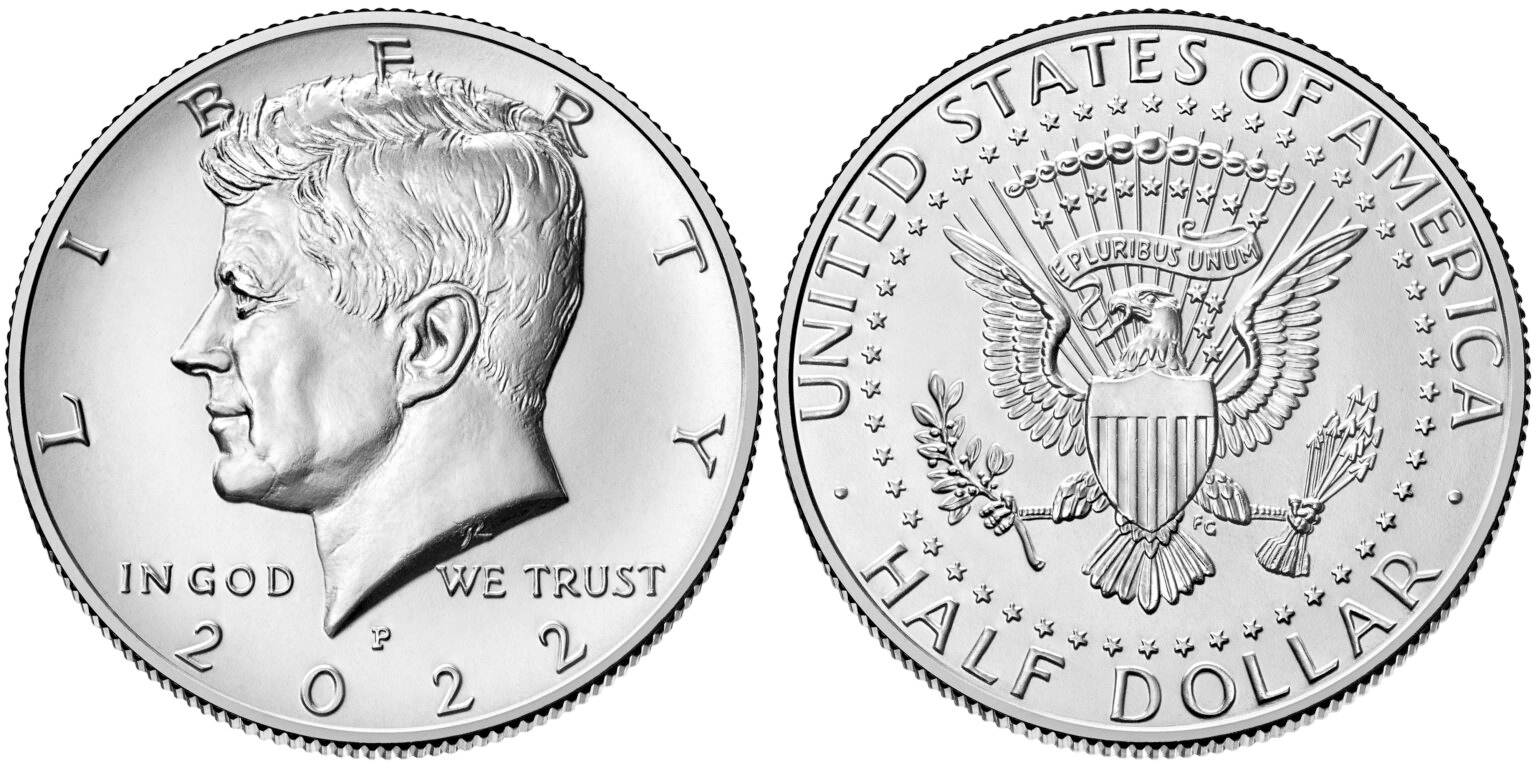
The US Half Dollar was first produced in the year 1794, and used the design known as the “Flowing Hair”. This design wasn't received as well as others because people felt that the portrayal of Lady Liberty on the obverse with her hair loose (meant to portray freedom) just made her look frightened and unkempt.
The current design of the Half Dollar depicts President John F. Kennedy in profile on the obverse, with the word “Liberty” nearly surrounding the entire edge of the coin, the motto “In God We Trust” is near the bottom, and the date is along the bottom edge.
The reverse of the half dollar shows the Presidential Seal, which is an eagle carrying a shield on its chest, and grasping arrows in his left talons, and an olive branch in his right, representing Liberty, War, and Peace. There is a banner above the eagle with the motto “E Pluribus Unum”, and the denomination of Half Dollar is along the bottom of the coin. “United States of America” is along the top edge.
The U.S. Dollar Coin
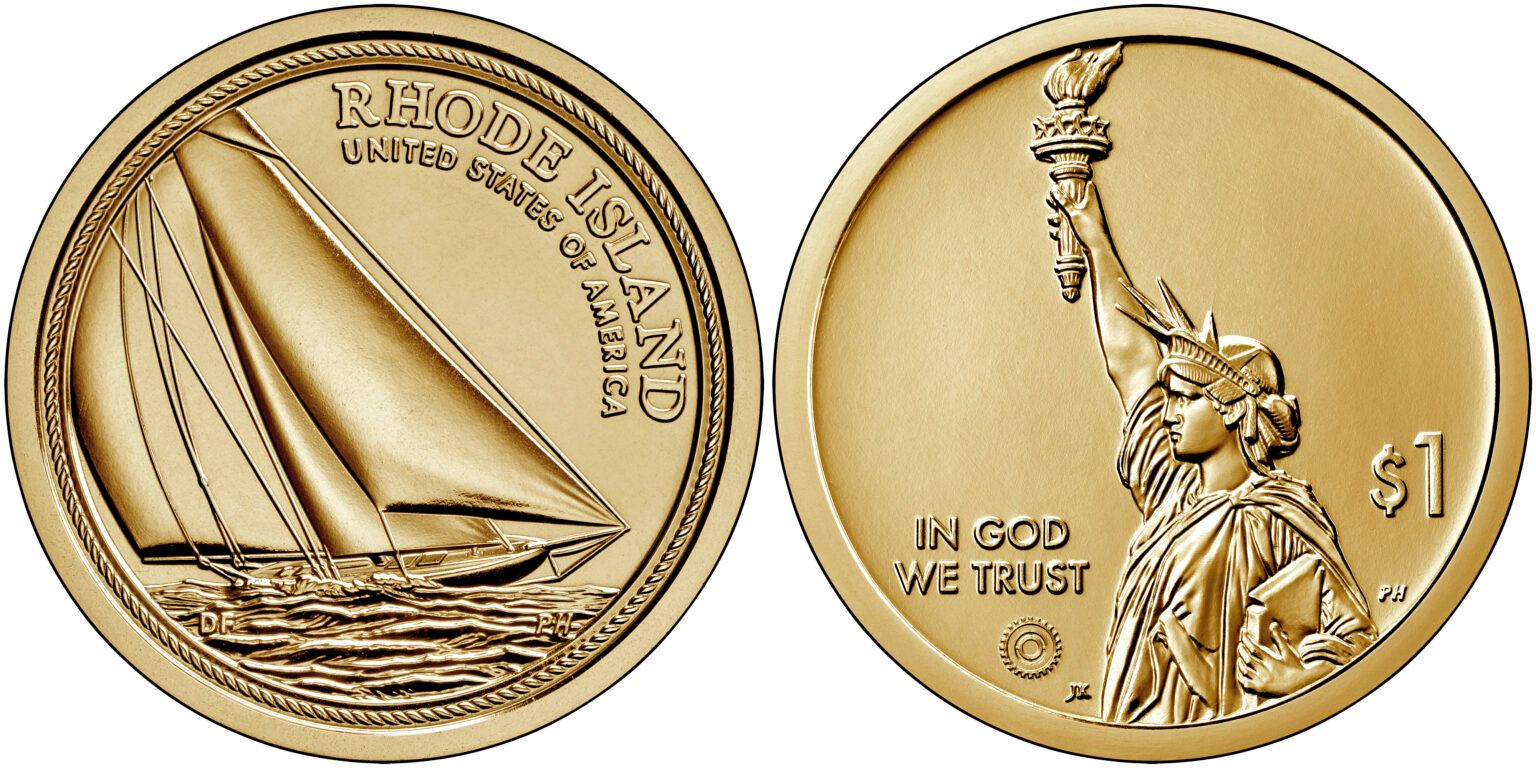
The US Dollar Coin was also first produced in the year 1794, and had the same design as the Half Dollar, the “Flowing Hair”. Over the years the dollar coin has been minted in gold, silver, and base metals. Most commonly known as the silver dollar though, as the most popular dollar coins were silver. From 1849-1889, the dollar coin was actually made from gold!
Now the current design of the dollar coin changes, and has a few different programs, such as the Presidential Dollar Coins, or the American Innovation Dollar Coins like the one featured above. The Dollar Coin represents Rhode Island, and recognizes the groundbreaking technical innovations of the Reliance Yacht, built in 1891 by naval architect Nathanael Herreshoff.
All Rights Reserved | CoinCollecting.com

